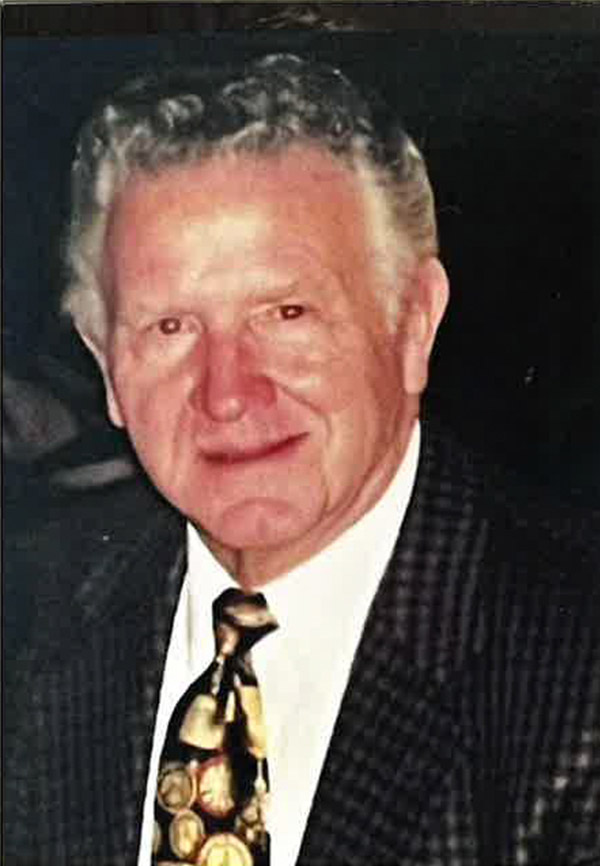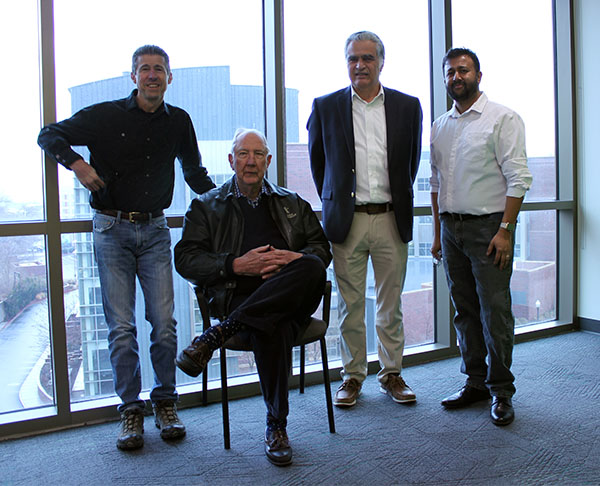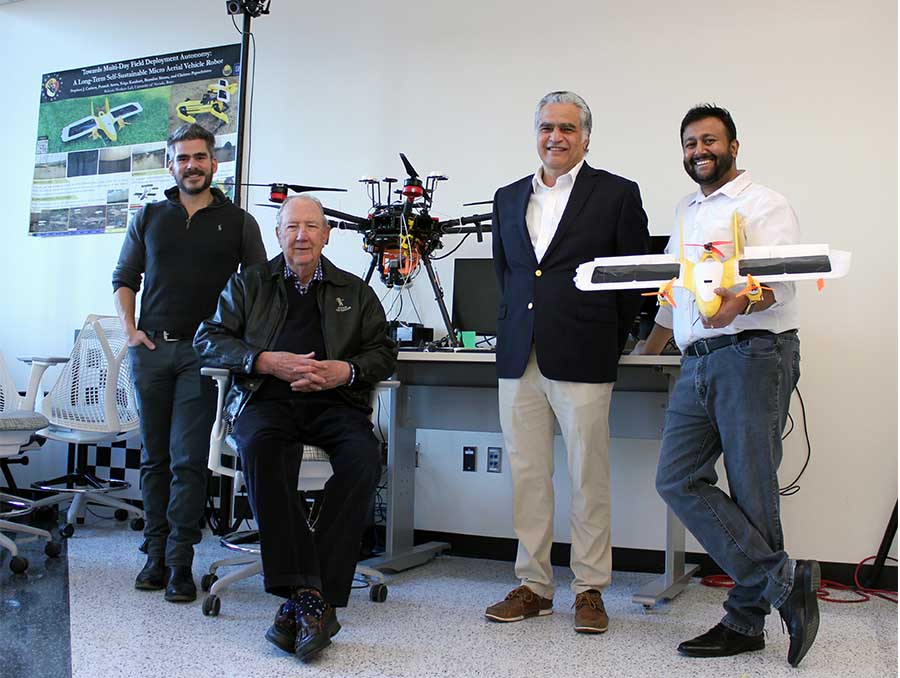Mechanical Engineering Chair Petros Voulgaris has his work cut out for him: the development of an Aerospace Engineering Department within the College of Engineering.
It has been a long time coming: community members, industry, academia, donors and others have been working toward this goal for the past 20 years. Those efforts got a big boost this fall: On Oct. 31, University officials and Engineering Dean Erick Jones announced a $36 million individual gift from the George W. Gillemot Foundation to create an aerospace engineering department within the college. (Currently, the college offers a minor degree in aerospace engineering, which will form the nucleus of the new program.)

“The entire process has taken a number of starts, steps and events, but in particular, the dream of George W. Gillemot, to envision, plan, obtain and guide this incredibly significant and institution-changing gift,” Thomas J. Hall, a Gillemot Foundation trustee, said. “In truth, it has taken a large team many years to bring it all together.”
Nevada is primed and ready for a full aerospace engineering program: the region has a burgeoning aerospace industry and it’s home to Nellis and Creech Air Force bases as well as Naval Air Station Fallon. The College of Engineering has as one of its research pillars “unmanned vehicles and the new space frontier.”
“There is a great growth in the aerospace industry (in Nevada),” Voulgaris said, “so there is high promise for a successful aerospace engineering program.”
With the Gillemot gift, the college can work to make good on that promise.
“This type of gift puts us in the top of the food chain as far as aerospace in the world,” Jones said. “Aviation is becoming increasingly important as we see some of the things that are happening with NASA. (This gift) helps us recruit the best faculty in the world to do aerospace engineering.”
If approved by the Nevada System of Higher Education (NSHE) in the upcoming year, a major and graduate program are expected to be offered in the future.
Building blocks and support
Gillemot was one of the earliest champions for an aerospace engineering program at the University, proposing an aerospace program as early as 2003. A businessman who enjoyed a storied career in communications engineering technologies before settling in Nevada and focusing on philanthropy, Gillemot was an aviator, inventor, entrepreneur, philanthropist and dreamer, as well as a lifelong learner, according to Hall.
“Over the last 20 years, we needed and developed building blocks and support from the Reno Air Racing Foundation, to Pathways to Aviation, to the Lockhart Gift, and now, to the very large and generous Gillemot gift,” Hall said. “Once, we even invited Astronaut Buzz Aldrin to speak at the University of Nevada Foundation Annual Banquet for 700 alumni, donors and Northern Nevada community leaders.”
The $100,000 Lockhart gift, secured by Hall, established the Victor LaMar Lockhart professorship. Voulgaris, who was brought on in 2020 to build the aerospace program, is the current Lockhart Professor.
Voulgaris’ arrival helped crystallize the University’s concurrent efforts to establish aerospace engineering, efforts led by Mechanical Engineering Foundation Professor Miles Greiner, University Vice President for Research and Innovation Mridul Gautam and former Engineering Dean Manos Maragakis.

And things began to happen: In fall 2021, an aerospace engineering minor program in the Mechanical Engineering Department was launched, and aerospace engineering Assistant Professor Aditya Nair was brought on board.
Other program developments included the acquisition and cleanup of a 5,600-square-foot space for the aerospace labs in Stead, a community about 10 miles north of the University campus, and development of aerospace engineering curricula to support the major. An aerospace engineering student club also has gained momentum.
NASA ULI
In December 2021, NASA announced the selection of four university teams to do aviation research through its University Leadership Initiative (ULI), and the University of Nevada, Reno, was named as a participant on the team led by the University of Illinois, Urbana-Champaign. The team aims to deliver trustworthy autonomy tools to help aircraft fly safely through complex airspace, typical of dense urban environments.
“This was key in the momentum-building for the aerospace engineering program as it showed the commitment, capacity and promise of University faculty into the area of trustworthy autonomous air vehicles,” Voulgaris said. “This provides University faculty and students with new, nationally collaborative opportunities for research and broader education.”
The University’s participation in the NASA ULI project was important in making the case for the Gillemot Foundation gift, according to Voulgaris. Invaluable support also came from Hall, a Gillemot Foundation trustee, who has long championed aerospace and aviation programs at the University and in the Reno-Stead area. As he mentions, “this NASA ULI grant certainly played a positive role in all of this development.”














